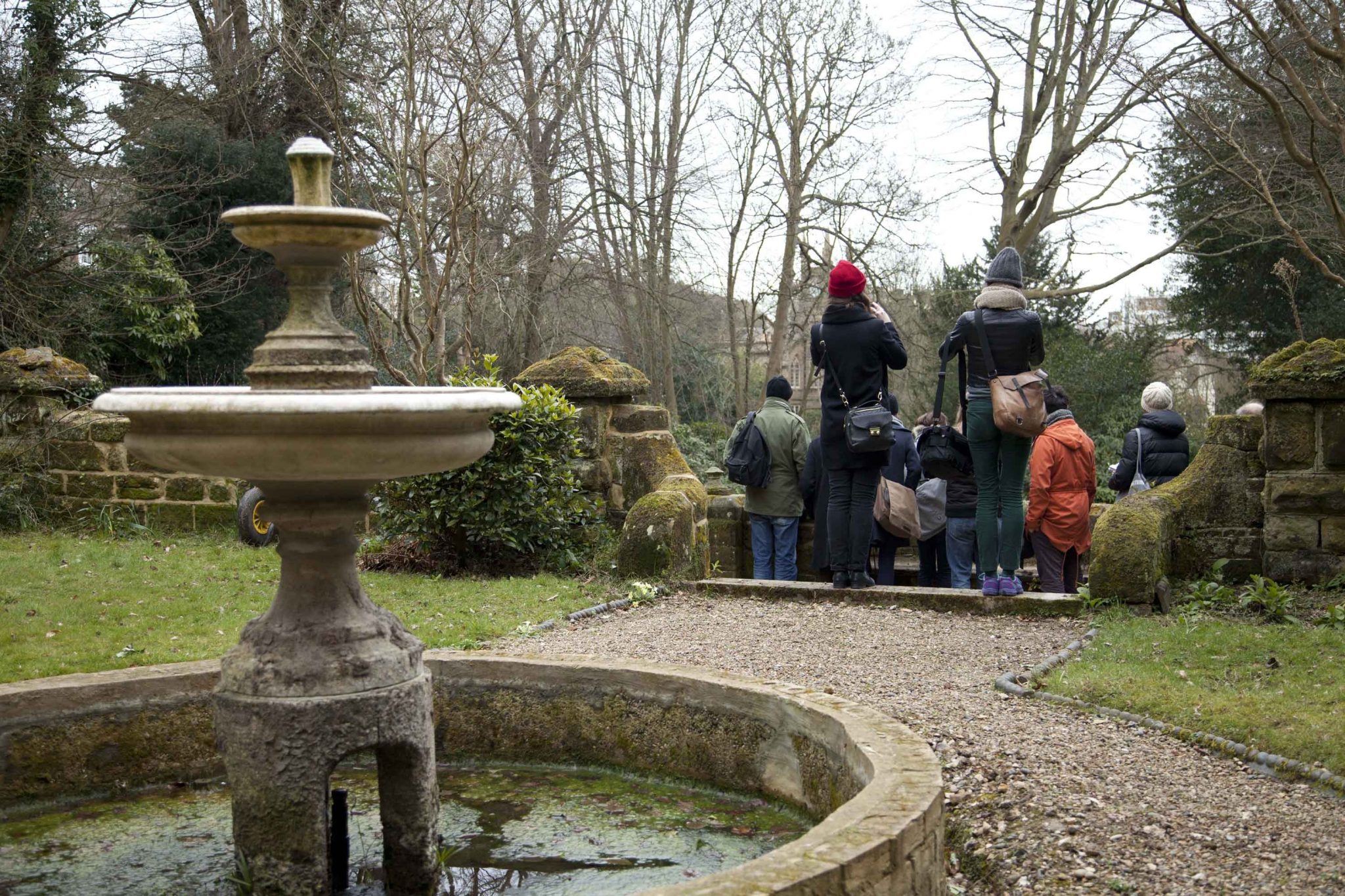Standing in a darkened, deserted corridor within Knole, the ancestral seat of the Sackville-West family since 1603, I’m struck by how uninspiring the paintings that fill the wall are. The amount of art in this ‘calendar’ house in Sevenoaks, Kent – spread throughout what apparently amounts to 365 rooms, 52 staircases, 12 entrances and 7 courtyards – is staggering, yet none of these oil works, mostly depicting Sackville-West descendants, have much expression or life to them. The paintings, after all these years, seem as dead as their subjects. Simon Martin comes round the corner (I give a little nervous start – there’s just six of us here, plus a National Trust curator, in the otherwise empty, heavily shuttered building). “Its just stuff, isn’t it?” the artist says. He seems to be thinking along the same lines as me about these dusty memorabilia of people long forgotten.
Knole is the last stop on a two-day roadtrip across the southeast of Britain. There are three artists in our two-car convoy. The first carries Martin, Ursula Mayer and Becky Beasley, together with curators Claire Feeley and Ciara Moloney – the minds behind the Jerusalem project, the banner under which this sojourn has been instigated. The second car carries a requisite core of documentarians, including myself. Our weekend is the third Jerusalem roadtrip. Similar weekends have been organised – each with a different trio of participating artists – along the east coast of Britain, and north to Sheffield. All are described as travelling residencies by Feeley and Moloney.
Perhaps the paintings at Knole feel so inert because for the past two days I’ve seen art in its rawest form: so raw, in fact, that it might not even end up being art at all. Each artist had requested visits to places of architectural significance that chime with the general interests of their work. The first morning, then, Beasley organised a tour of her hometown of St Leonards-on-Sea in the company of local historian Edward Preston. Specifically we walked the route of the long-built-upon waterways, while Preston pointed out evidence of its subterranean survival: a pond here, a pothole there. Beasley’s sculptural objects ask the viewer to tease out hidden histories – real or otherwise – from them. Here she seemed to be putting herself in her audiences’ shoes, and allowing Preston to reveal the hidden narratives of a place already very familiar to her. Even for those who had not visited the seaside resort previously, the tour turned an otherwise generically pretty English town into a place layered metaphorically and literally (geographically, architecturally) with histories.
Then Martin took control of the navigation and we visited Sea Lane House, a privately owned villa in East Preston, West Sussex, by Bauhaus- trained architect and designer Marcel Breuer (which is now set amid suburban hell). Happenstance was one of the best features of the weekend. We were at the house – and soon after, the Arts and Crafts home of a middle-aged couple – as part of Martin’s research for an ongoing work, UR Feeling. The artist has been interested in peripheral architectural elements (eg, doorknobs, worn steps, the parts of a building that most often come into contact with the human body) as a way of talking about objects, domestic or artistic, in both sensual and cultural terms. Yet it was Ursula Mayer whom was most taken with the Breuer building: in particular a room still under renovation by the present owner, in which the only other object beside a dustsheet-covered sofa and bed was a 3m-high, grainy reproduction of one of the most famous images from Helmut Newton’s 1981 Big Nudes series, otherwise untitled. When one recognises that Mayer’s work investigates the apparent gendered nature of architectural styles (the perceived masculinity of Modernism, for example), it’s clear how this serendipitous setup might be catnip to the artist.
Dinner back in St Leonards was spent ingesting wine and digesting the day’s events. The next day officially belonged to Mayer, tracing the buildings that told the story of the relationship between Vita Sackville- West and Virginia Woolf. First Woolf’s cottage, Monk’s House in the village of Rodmell; and then an hour’s drive north to Knole. Essentially, of course, we were tourists, but ones whose experiences had the potential to become something more than just racked-up memories. Along the way nuggets of information were picked up, little windows of interest opened. Whether these will actually result in anything tangible is uncertain, but perhaps also – and brilliantly – beside the point.
This article was first published in the Summer 2013 issue.
